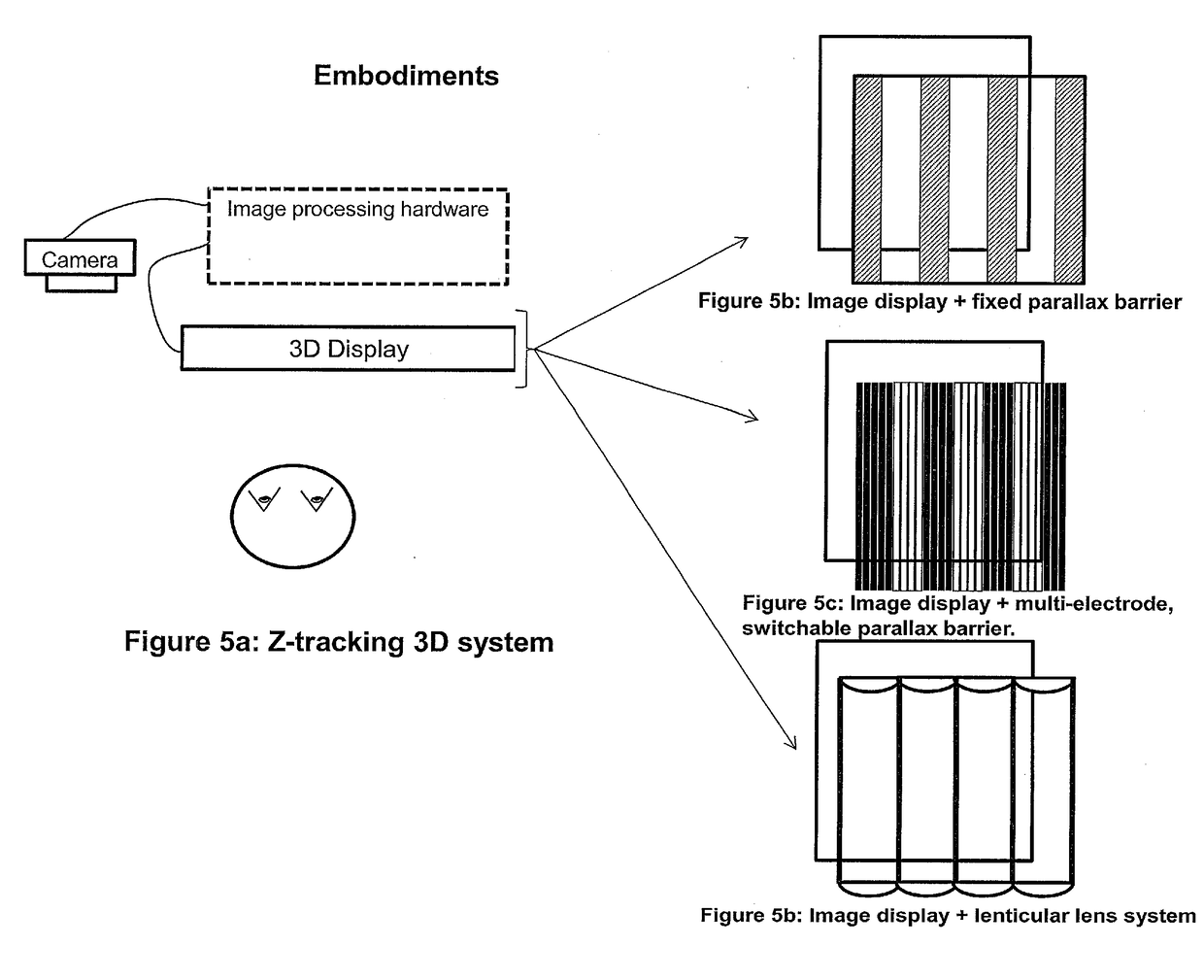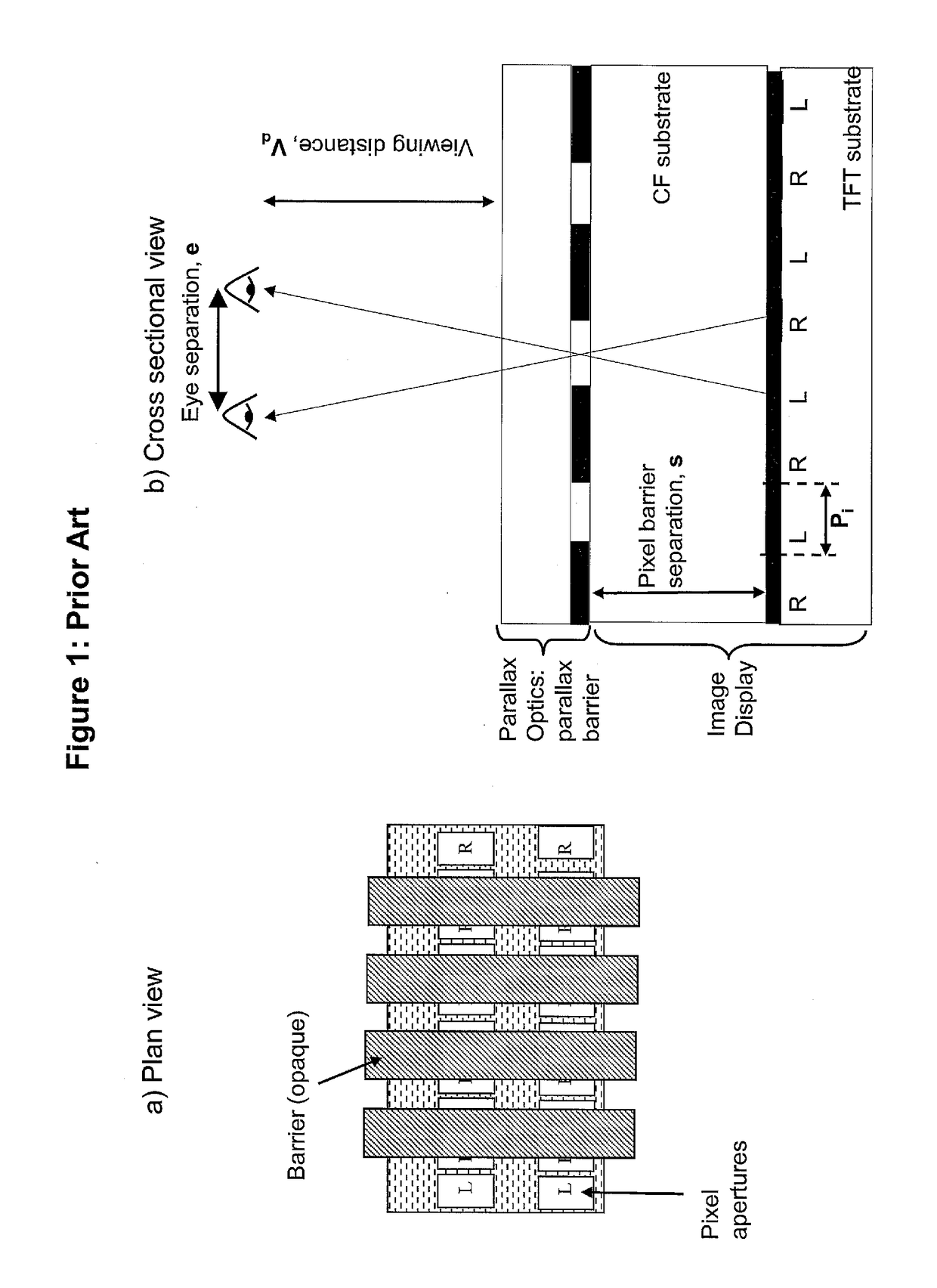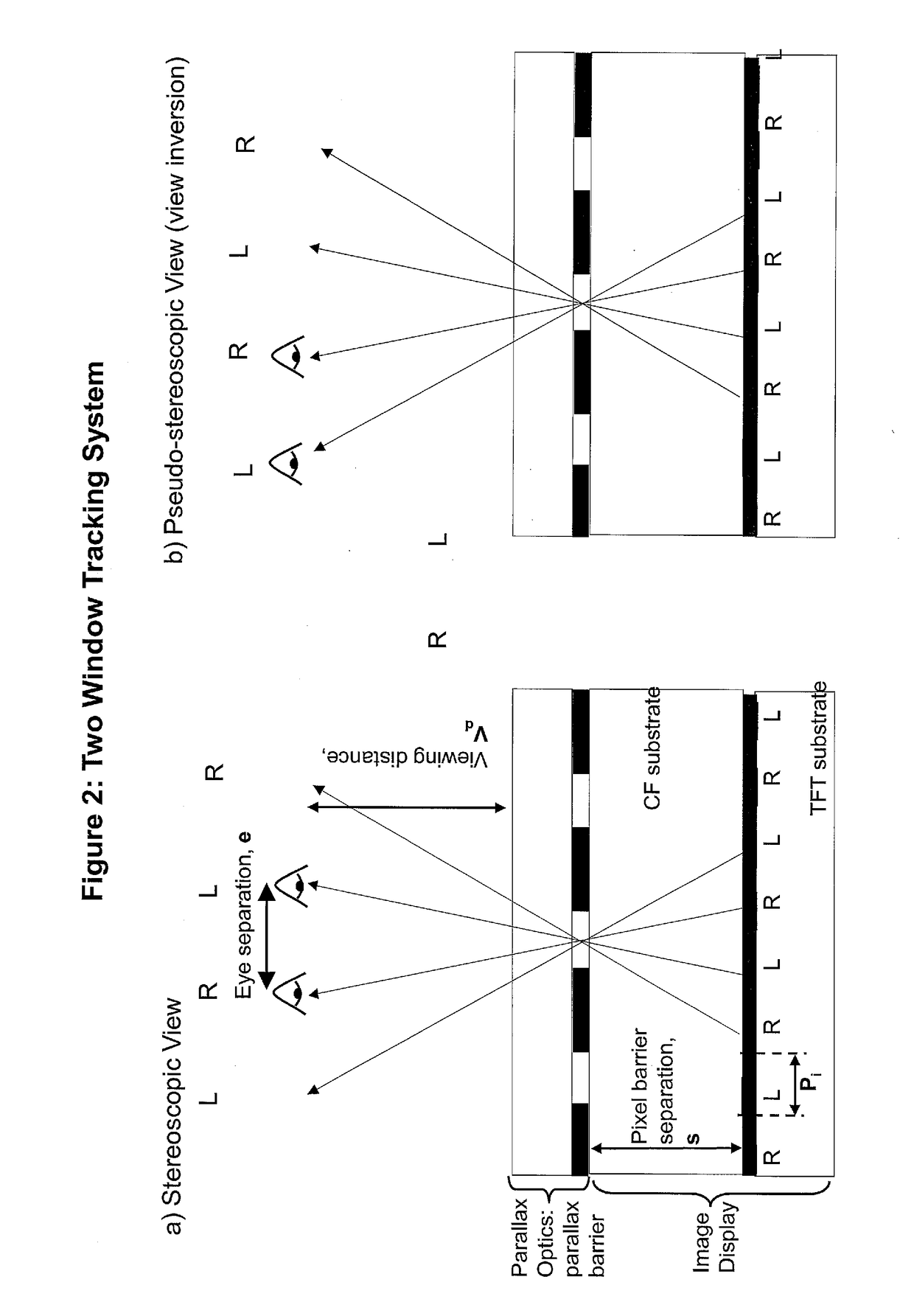Variable barrier pitch correction
a variable barrier and pitch correction technology, applied in the field of multi-view directional display, can solve the problems of parallax barrier or lens system, viewer observes a stereoscopic image only in strict viewing zones, and increases the total system cost, and achieves good image quality
- Summary
- Abstract
- Description
- Claims
- Application Information
AI Technical Summary
Benefits of technology
Problems solved by technology
Method used
Image
Examples
embodiments
[0079]1. In a first embodiment, the tracking system is used in conjunction with a camera and fixed parallax barrier 3D display. Such a system is shown in FIG. 5a. A parallax system with a 6 sub-pixel repeating interlace pattern, a slanted barrier with a slope of 1 pixel per row and a slit width of 3 pixels (NP6-3 stag 1) gives very good tracking performance. This good performance is partly due to the ‘redundant’ sub-pixels that are initially hidden from the user and may be pre-loaded with view information. Correct view information can be maintained for each eye as the user moves and these hidden sub-pixels are revealed. The image processing hardware is configured to implement method one and / or method two as described above.
[0080]2. In a second embodiment, the tracking system is used in with a camera and a switchable parallax barrier. The barrier may be switchable in a discrete manner, as illustrated by FIG. 5c, with electrodes used to control spatial transmissivity. The barrier feat...
PUM
 Login to View More
Login to View More Abstract
Description
Claims
Application Information
 Login to View More
Login to View More - R&D
- Intellectual Property
- Life Sciences
- Materials
- Tech Scout
- Unparalleled Data Quality
- Higher Quality Content
- 60% Fewer Hallucinations
Browse by: Latest US Patents, China's latest patents, Technical Efficacy Thesaurus, Application Domain, Technology Topic, Popular Technical Reports.
© 2025 PatSnap. All rights reserved.Legal|Privacy policy|Modern Slavery Act Transparency Statement|Sitemap|About US| Contact US: help@patsnap.com



